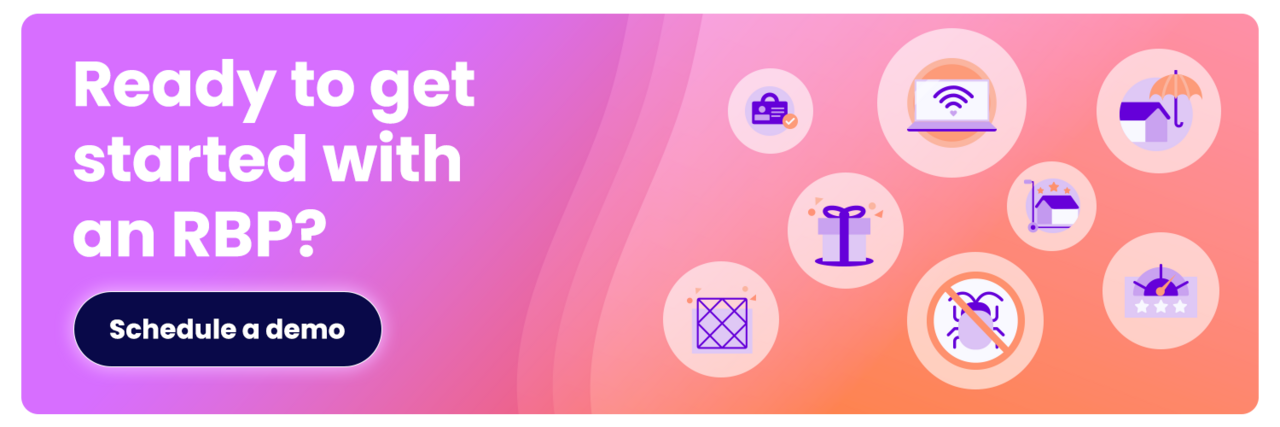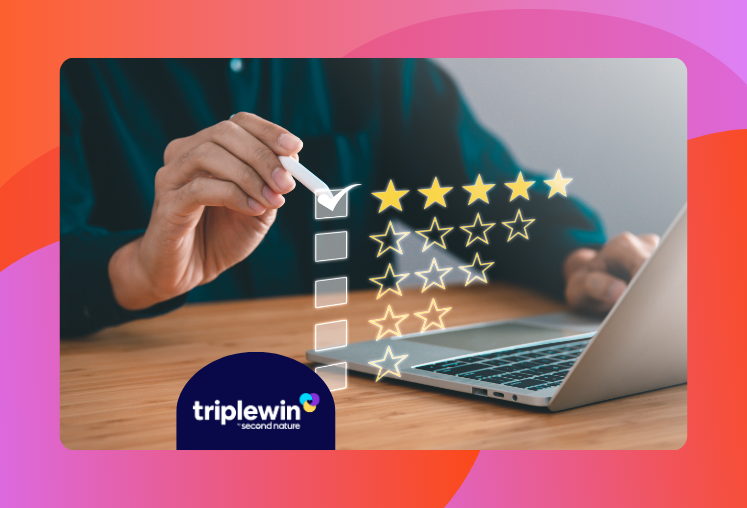Tenant turnover is the process that occurs when a current tenant vacates a rental property, and a new tenant moves in. It's just the natural process of residents moving in and moving out. Sometimes, it's a sign of a challenging property, but often, it's just a natural part of the renting journey.
While tenant turnover is a standard part of the rental business, the downside is that it often comes with associated costs and potential revenue loss due to vacancy periods. Tenant turnover costs can exceed thousands of dollars per month and hurt your cash flow, significantly impacting tenant retention rates.
Understanding the ins and outs of tenant turnover is essential for effective property management and profitability. It's key to reduce the time of a turnover and to know the average tenant turnover rate in your area to improve tenant retention.
Second Nature's Outlook:
"Tenant turnover” is an industry term used from time to time. But we here at Second Nature are trying to evolve the word "tenant." We’ve seen the incredible work property managers do day in and day out to make renters feel like they’re so more than just tenants—they’re residents. Making renters feel like residents isn’t just philosophical, it also encourages them to invest in care for their home and add value to the property. This is why, at Second Nature, we prefer to call renters “residents.” Like you, we think of them as people first—making your property their home.
How to calculate tenant turnover rate
Getting the tenant turnover rate calculation correct is essential for property managers and landlords to understand their property's performance and the effectiveness of their management strategies.
The good news? The math isn't complicated!
Go through these three simple steps in our tenant turnover formula to get your rate:
- Determine the number of move-outs in a year: First, identify the total number of tenants who moved out of your property during a specific period, usually a year.
- Identify your average number of total units: Calculate the average number of rental units you have available for that same period. For example, if you started the year with 10 units and ended with 12, your average would be 11 units for the year.
- Calculate the turnover rate: Divide the number of move-outs by the number of total units and multiply by 100 (to get a percentage).
Tenant Turnover Rate = (Number of Move-outs) / (Number of Units) X 100
For instance, if you had three move-outs in a year and an average of 11 units, your tenant turnover rate would be: (3/11) X 100 = 27.27%.
This means that 27.27% of your units experienced tenant turnover that year. Understanding this rate can help you set targets and measure the success of your retention initiatives.
Related: How to Write a Tenant Move-Out Letter
Understanding tenant turnover costs
Vacancies disrupt your income stream and your investors' cash flow. The longer the vacancy, the more you're spending on marketing and management to find a new tenant. Here are four ways tenant turnover costs property managers due to the presence of vacant units.
1. Maintenance and repair
After a tenant leaves a property, you have to restore it to a marketable condition. Ideally, the tenant leaves it in excellent condition. But you'll still likely need to pay for deep cleanings, some light repairs, and some updates like fresh paint, patching holes, etc. Additionally, as a property sits vacant, it will slowly deteriorate to some degree. The longer the vacancy, the greater the need for maintenance, upkeep, or repair.
2. Showings
Whether you do in-person showings or virtual/remote showings, there is a cost to prepping and opening the property to prospective tenants. You may need team members on site, or to make time to set up virtual showings.
3. Marketing
A vacant property is a property that needs to be filled. You may primarily use services like Craigslist or Zillow, which require time and cost within your own team to build and maintain listings. Or, you may also pay for ads to get more views. And, of course, in some cases, you'll need to include real estate agent commissions in your budget.
4. Overhead
The whole process of turning a property involves hands-on effort from yourself and your team (if you have one). The cost in time and team members' salaries can add up.
How to reduce tenant turnover
We don't have to tell you that high tenant turnover is a property manager's nightmare. It incurs significant costs, from marketing the property and screening new tenants to potential lost income during vacancies. Tenant turnover costs can add up to thousands for each unit each month.
However, with the right strategies in place, reducing tenant turnover is more than achievable. Let's explore these tenant retention strategies that not only enhance the resident's living experience but also boost the value of your client-investor's assets, such as how to offer incentives and your business's reputation.
1. Offer competitive rent prices
Ensure your rent prices are in line with the local market. Overcharging can lead to tenants seeking more affordable options elsewhere. Fortunately, with the interconnectedness of the real estate market, and a proliferation of software and apps that help track it, property managers can easily stay on top of the latest market trends.
2. Foster a strong property manager-tenant relationship
Regular communication and a respectful attitude can go a long way. Make tenants feel valued and heard. Address their concerns promptly and maintain transparency in all interactions. Clear and consistent communication goes a long way to protect this relationship.
A Resident Benefits Package is an excellent way to prioritize the PM-resident relationship. It shows them you care about their lived experience and offers solutions to their most common pain points.
3. Address maintenance requests promptly
Swiftly responding to and resolving maintenance issues demonstrates that you care about the tenant's comfort and safety. Regular maintenance checks ensure small issues don't become major problems. When tenants see that the property is well cared for, they're more likely to stay – and to take care of it themselves.
Another important factor is offering on-demand pest control, not just preventive care. Residents will rest easy knowing that, should any issues arise, they know exactly who to turn to and that it will be dealt with promptly.
4. Update and renovate
Modernizing appliances or adding new amenities can make the property more attractive and encourage tenants to stay longer. Modern, functional amenities can be a significant draw.
Periodically update or add amenities like a dishwasher, laundry units, or improved outdoor spaces to enhance the property's appeal.
5. Offer lease renewal incentives
Consider providing discounts or other benefits for those who renew their lease and avoid extra fees , making the option more enticing. A resident rewards program can accomplish this along with incentivizing on-time rent payments and extra TLC for the property.

6. Ensure security
One of the top priorities for any resident is feeling safe in their home. This extends beyond just locking doors; it involves well-lit outdoor areas, potentially installing security cameras, etc.
But did you know that identity theft has actually surpassed home burglaries as a risk to renters in the past two years? That's why our Resident Benefits Package includes identity protection and renter's insurance. Insurance protects your property, and identity protection preserves the resident's financial stability – and, therefore, their ability to continue making rent.
By proactively ensuring that security measures and insurance are up-to-date and effective, property managers can instill trust and peace of mind in their tenants, encouraging them to stay longer. And by providing identity protection, you can ensure that payments are safe, too.
7. Conduct regular inspections
Routine inspections aren't just about ensuring that tenants are treating the property well; they're also an opportunity to identify and address minor issues before they escalate.
By regularly checking in and maintaining open communication, property managers demonstrate commitment to the property's upkeep and the tenant's well-being.
These inspections also give residents the confidence that they're in a proactive environment. They know you're looking out for them and likely won't feel the need to look for alternatives that might be less proactive.
8. Implement a rewards system
Resident rewards are an integral part of an RBP for good reason. Recognizing and rewarding responsible behavior can play a significant role in fostering loyalty among residents.
By introducing a rewards system, property managers can incentivize timely rent payments, property care, and long-term leases. Whether it's a discount on a month's rent, a gift card to a local establishment, or points that can be redeemed for various perks, rewards make tenants feel appreciated.
Over time, this builds a positive relationship, encouraging them to renew their leases and view their rental as more than just a temporary dwelling.
9. Vet applicants thoroughly
One of the best proactive steps in ensuring long-term tenancy is by meticulously vetting potential tenants.
The process of screening new tenants, with background checks, evaluates a tenant's rental history, financial stability, and overall fit for the property. By identifying individuals with a history of timely payments, respect for previous rental properties, and stable employment, property managers increase the likelihood of having residents who will care for the property, abide by lease terms, and remain for extended periods.
This approach not only minimizes potential conflicts and evictions but also fosters trustworthy and transparent relationships with your residents.
10. Seek feedback and act on it
Actively seeking feedback from tenants provides invaluable insights into areas of improvement and showcases a genuine commitment to enhancing their living experience.
Whether it's through regular surveys, suggestion boxes, or casual conversations, understanding tenant concerns and promptly addressing them helps build trust and rapport.
When residents see that their opinions matter and lead to tangible changes, they feel valued and heard. This proactive communication strengthens your relationship and often encourages longer stays as residents recognize the effort made to optimize their living environment.
Tenant turnover checklist for property managers
Here’s a checklist template for managing tenant turnover at your properties.
1. Pre-notice period
- Review lease expiry dates.
- Initiate renewal conversations with tenants.
- Survey tenants on reasons for move-out if they choose not to renew.
2. Once notice is given
- Provide move-out instructions to tenants.
- Schedule a pre-move-out inspection.
- Inform maintenance team of upcoming vacancy.
3. Inspection and repairs
- Conduct thorough move-out inspection.
- Document and photograph any damages beyond normal wear and tear.
- Get estimates and schedule repairs and upgrades.
- Clean or replace carpets if necessary.
- Paint walls where required.
4. Marketing the property
- Update online listings with current photos and features.
- Set competitive rent based on market research.
- Host open houses or private viewings.
5. Tenant application and screening
- Collect applications from prospective tenants.
- Conduct thorough background and credit checks.
- Check references from previous landlords.
6. New tenant onboarding
- Prepare and sign a new lease agreement.
- Offer a welcome packet, gift, and orientation for new tenants.
- Hand over keys and ensure they understand property rules.
7. Post-move-in
- Seek feedback on the move-in process.
- Provide information on reward programs or other incentives.
- Remind new tenants of maintenance request procedures.
8. Financial matters
9. Continuous improvement
- Analyze reasons for turnovers.
- Update property features based on tenant feedback.
- Consider conducting a yearly review to address potential concerns before they lead to turnover.
Print or save this checklist to ensure a smooth tenant turnover process and mitigate potential challenges. By following these steps, property managers can streamline the transition period and maintain a high standard of service for all residents.
Related: Step by-Step Tenant Onboarding Process
Looking for additional ways to reduce tenant turnover? Consider adding a Resident Benefits Package to your offering.








